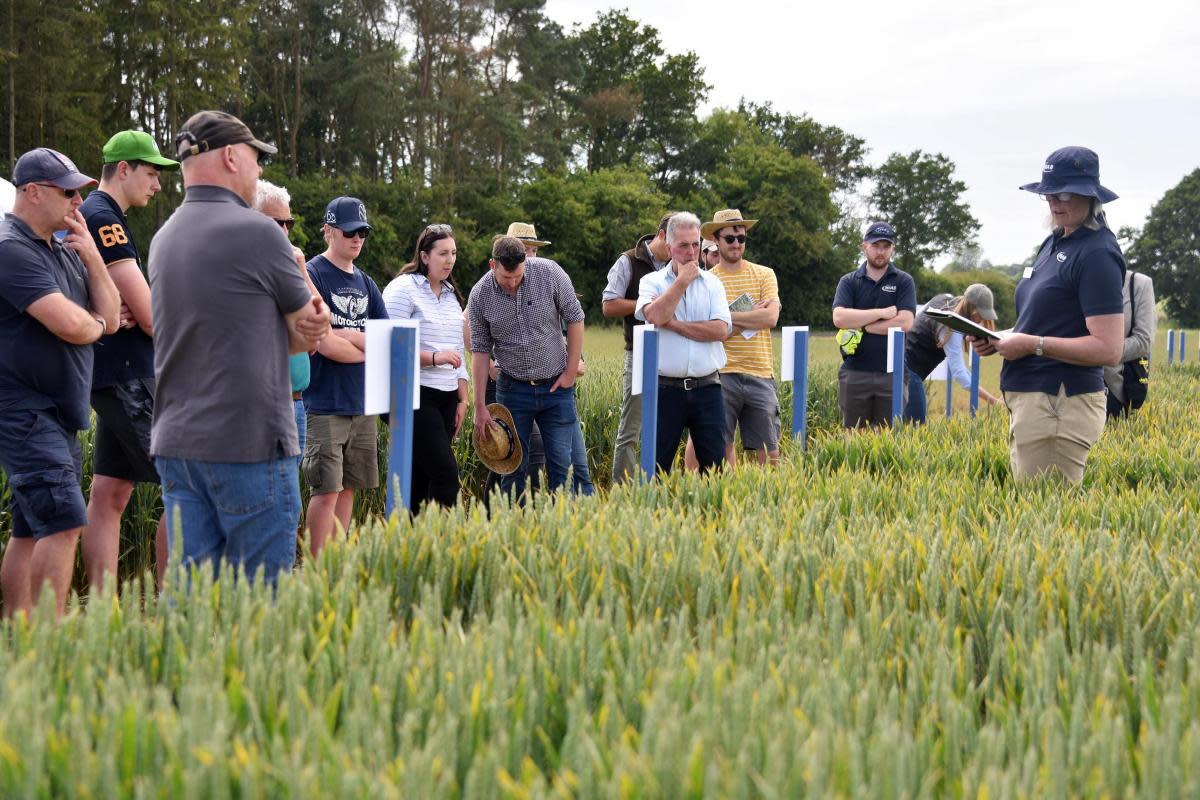Amazing farm science and crop innovations go under the microscope at field day

Valuable farming insights from East Anglia's ground-breaking crop scientists brought hundreds of farmers to a Norfolk field.
The annual Morley Innovation Day, at Morley Farms near Wymondham, gave farmers the chance to talk with industry experts and explore crop trials and field demonstrations.
It was hosted by the Morley Agricultural Foundation (TMAF), a charity which funds farming research and hosts trials for organisations including NIAB (National Institute Of Agricultural Botany) and the Norwich-based British Beet Research Organisation (BBRO).
Morley Farms is also the AHDB Strategic Cereal Farm East, part of a national initiative run by the Agriculture and Horticulture Development Board.
The open day, on June 20, showcased wheat and barley variety trials, and discussed soil health, agronomy, crop genetics, data analysis, improving nutrient use efficiency, and ways to reduce the need for agrochemicals for weed, pest and disease control.
In the crop trial plots - finally drenched in sunshine after a dull and wet start to the year - senior NIAB plant pathologist Aoife O’Driscoll, spoke to farmers about disease prevention.
NIAB plant pathologist Aoife O’Driscoll speaking to farmers at the Morley Innovation Day at Morley Farms, near Wymondham (Image: Chris Hill)
Despite the wet autumn and winter, she said Norfolk's crops had fared better than those in some other parts of the country.
But this year has proven the critical importance of choosing the right variety and the optimum drilling date to sow the seeds, to get the best disease resistance in the crop.
"You get between 50 and 80pc disease control just by selecting the correct variety," she said.
"But I have an awful feeling that people are going to drill early this year, despite all our talk about trying to get people to drill later, as that gives you less disease.
"I've got a feeling people are going to go in early September, just because of all the weather that we have had.
"But if you are doing that, what are you doing to your disease control? Every week you drill earlier reduces that variety's disease rating by 0.6, so you are reducing that control by about 10pc.
Farmers take a close look at the crop trials at the Morley Innovation Day (Image: Denise Bradley)
"We have definitely seen this year that all the varieties are behaving as you would expect in terms of their disease rating. But you will affect that if you start to drill in the first or second week of September. You could drop those ratings by about two points, and that's not good."
She also urged wheat growers to submit samples to the UKCPVS (UK cereal pathogen virulence survey), a disease monitoring service set up by NIAB in 1967 to alert growers, plant breeders and agronomists to changes in the populations of important cereal pathogens like septoria, yellow rust and brown rust.
Meanwhile BBRO researchers showcased two new ideas to stop virus yellows - a disease which can inflict serious damage on sugar beet crops.
Scientists have been spraying coloured dyes onto farm fields to confuse virus-carrying aphids in a "camo-cropping" trial - part of their efforts to find natural alternatives to banned neonicotinoid pesticides.
The BBRO has also secured a permit to use, under strict controls, a French product named Agriodor, which uses natural fragrances designed to deter crop pests.
BBRO crop protection scientist Dr Alistair Wright at the Morley Innovation Day at Morley Farms, near Wymondham (Image: Chris Hill)
Crop protection scientist Dr Alistair Wright said: "It is a proprietary set of compounds developed in France - they call it a perfume. It is like an alarm pheromone, which causes the aphids to stop feeding and leave the crop.
"That is the idea - to delay the need for chemical sprays, and give beneficial insects longer to control the build up of the aphid population. Anything to get us away from neonicotinoids
"If you combine both of these, the Agriodor and the colouring, along with some disease-tolerant beet varieties, you can mitigate a lot of the threat of virus yellows.
"That is what we are trying to do - to change behaviours and think more widely about integrated pest management. That's our key theme this year."
Amy Catling, knowledge exchange manager AHDB, checking mummified aphids under a microscope at the Morley Innovation Day (Image: Denise Bradley)
Other Innovation Day participants included the John Innes Centre, based on Norwich Research Park, whose latest research highlights include identifying resistance to cabbage stem flea beetle in oilseed rape and using genome editing to improve future crops.
TMAF farm manager David Jones, who organised the event, said: "The people here are people we are working with in one way or another, and this is a chance to showcase some of the things that go on at the farm, and give these people a chance to talk about what they do.
"A lot of events at this time of year can be quite commercial, with people selling products and services.
"But the key thing is that we are a charity, so this is about independent thinking and best practice, rather than trying to sell something. It is about the long-term understanding of what we do."

 Yahoo News
Yahoo News 
